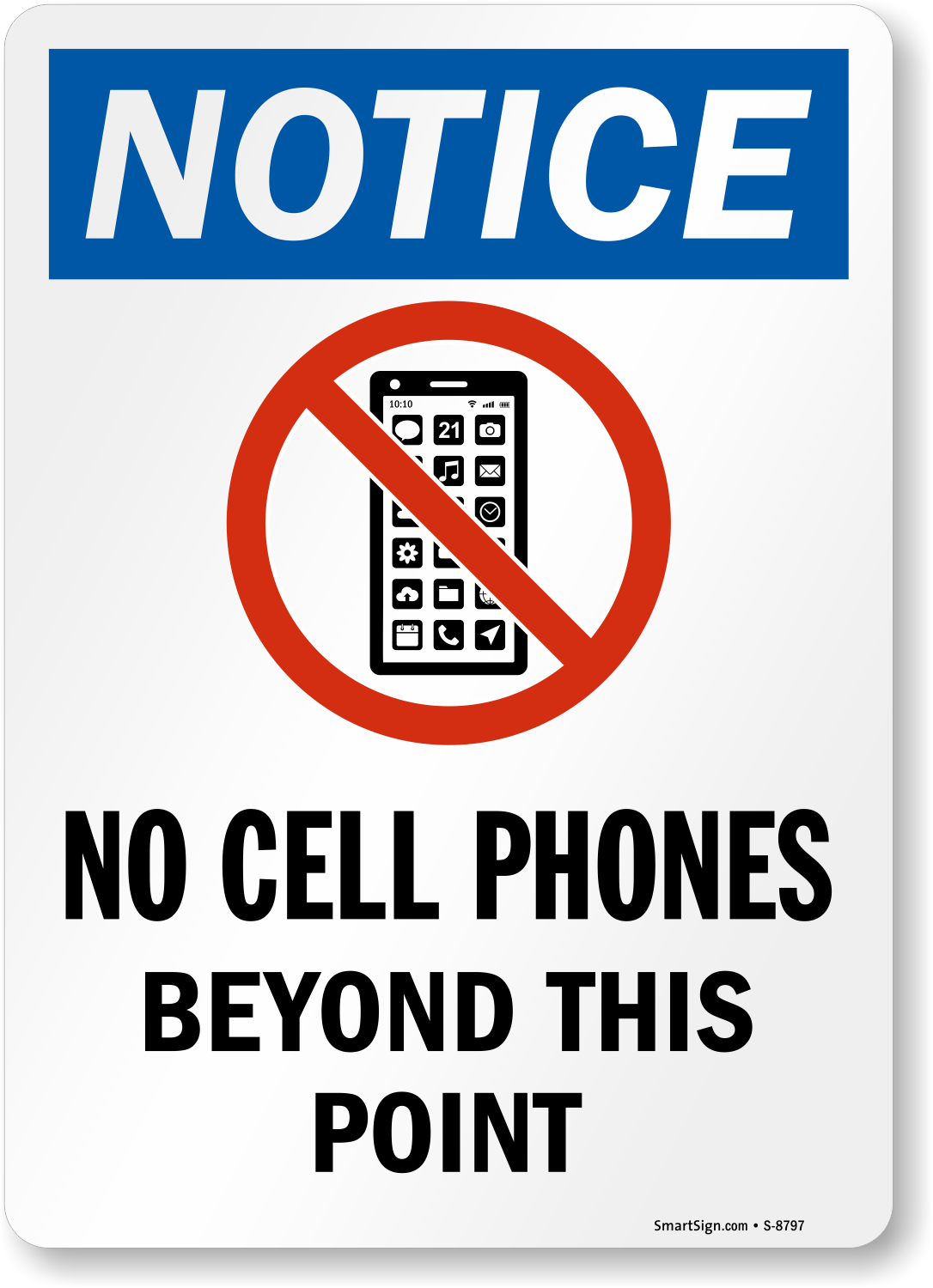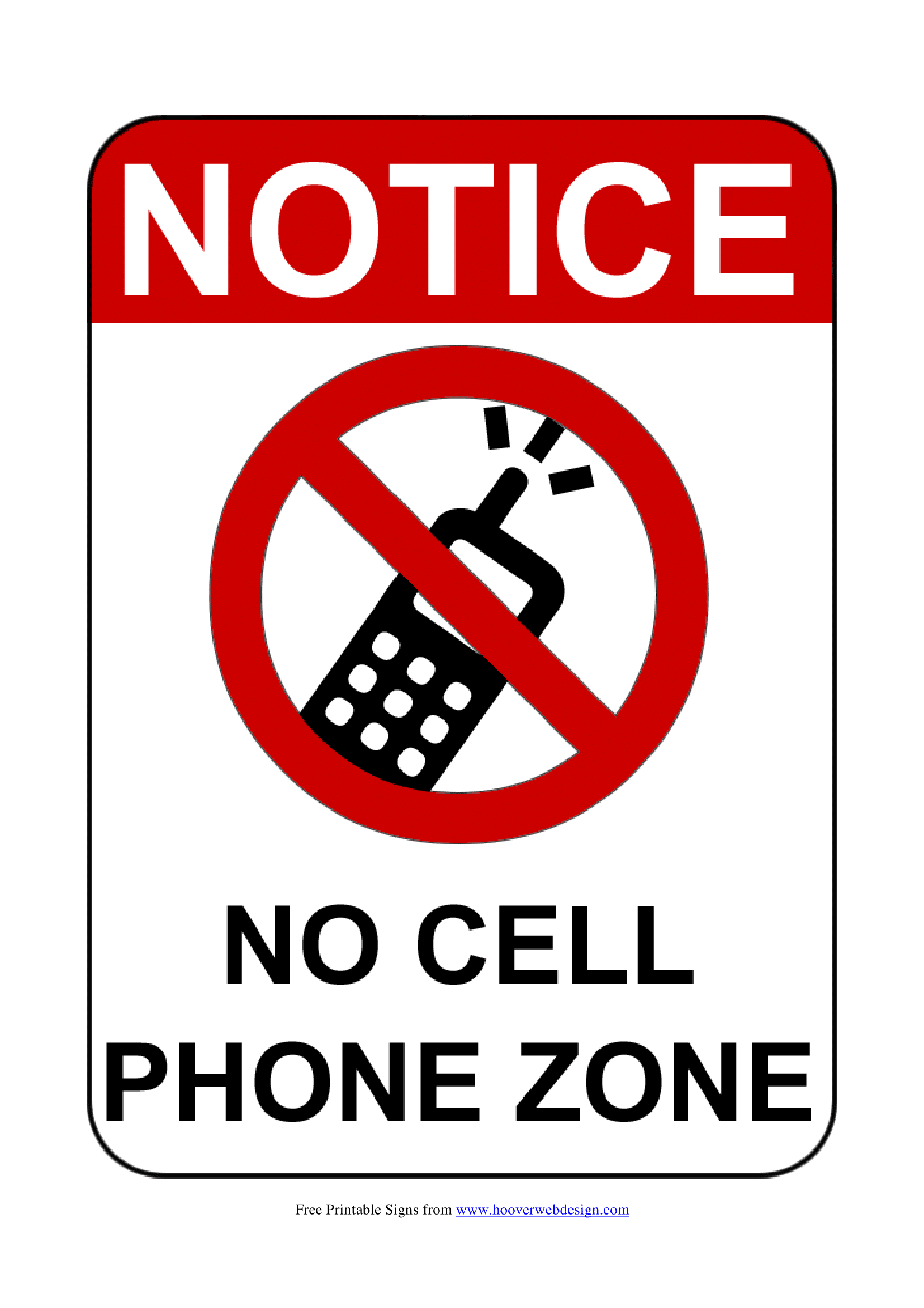As we go about our daily lives, we often find ourselves needing to communicate with others, whether it’s for work, personal matters, or simply to stay connected with the world. However, there are times and places where the use of cell phones can be disruptive or inappropriate. That’s why it’s important to have clear signage that indicates when cell phone usage is prohibited.
No Cell Phones Beyond This Point
 One common sign you may come across is the “No Cell Phones Beyond This Point” sign. This sign serves as a reminder to individuals that they must refrain from using their cell phones in a designated area. Whether it’s a movie theater, library, or any other place where silence and focus are important, this sign sets a clear expectation.
One common sign you may come across is the “No Cell Phones Beyond This Point” sign. This sign serves as a reminder to individuals that they must refrain from using their cell phones in a designated area. Whether it’s a movie theater, library, or any other place where silence and focus are important, this sign sets a clear expectation.
No Mobile Phone Use Beyond This Point
 A similar sign that you may encounter is the “No Mobile Phone Use Beyond This Point” sign. This is another way to emphatically communicate that cell phone usage is not permitted in a specific area. These signs are often seen in places such as hospitals, schools, or even workplaces where privacy and concentration are crucial.
A similar sign that you may encounter is the “No Mobile Phone Use Beyond This Point” sign. This is another way to emphatically communicate that cell phone usage is not permitted in a specific area. These signs are often seen in places such as hospitals, schools, or even workplaces where privacy and concentration are crucial.
No Mobile Phone Zone
 The “No Mobile Phone Zone” sign is another effective way to convey the message that cell phone usage is prohibited in a particular area. These signs are commonly found in places like museums, art galleries, or any other location where the use of cell phones would detract from the overall experience or disrupt others.
The “No Mobile Phone Zone” sign is another effective way to convey the message that cell phone usage is prohibited in a particular area. These signs are commonly found in places like museums, art galleries, or any other location where the use of cell phones would detract from the overall experience or disrupt others.
Importance of No Cell Phone Signs
No cell phone signs play an important role in maintaining order, respect, and minimizing distractions in various settings. They serve as a visual cue and a reminder to individuals to put away their cell phones and focus on their surroundings or the task at hand. By enforcing these signs, it helps create an environment that is conducive to concentration, productivity, and consideration for others.
In libraries and other quiet spaces, the sound of ringtones, message alerts, or loud conversations can be incredibly disruptive. These signs ensure that individuals can study, read, or work without unnecessary disturbances. In hospitals or healthcare facilities, the use of cell phones can interfere with medical equipment and compromise patient safety.
Educational institutions also greatly benefit from no cell phone signs as they promote focused learning environments. Students are less likely to be distracted by text messages, social media notifications, or games when they are reminded that cell phone use is strictly prohibited. This allows them to engage fully in their lessons and derive maximum benefit from their education.
Additionally, no cell phone signs can enhance the overall experience in public spaces such as museums, art galleries, or theaters. By discouraging the use of cell phones, visitors can fully immerse themselves in the exhibits or performances and appreciate the artistry without interruptions. Moreover, it ensures that other visitors are not disturbed by the glow or sound of cell phones while trying to enjoy the surroundings.
Conclusion
Regardless of the location or the rationale behind the prohibition, no cell phone signs are an essential tool to maintain decorum, order, and respect in various settings. They communicate expectations clearly and serve as a reminder to individuals to stay present and mindful of their surroundings. By adhering to these signs, we can create environments that foster productivity, concentration, and consideration for others.